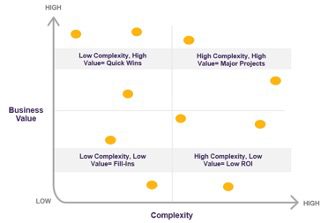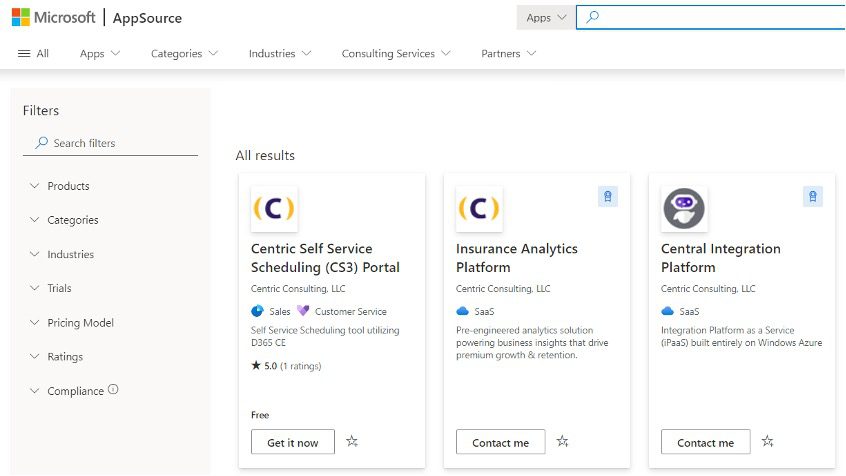If your CRM solution doesn’t meet your specific business requirements, chances are you’re not getting the best return on your investment. In this blog, we walk through how to evaluate your current system and provide a potential option for you to consider.
As we kick off the first article in our Dynamics CRM Never Stops Evolving blog series, we begin by discussing if your existing CRM system meets your needs and if Dynamics 365 might be the best tool for you.
Questions to start this process may include:
- Are you currently using a CRM solution but need clarification about whether it fits your business needs?
- Do you constantly have to buy additional add-ons, rely on external tools to bridge gaps where your current system falls short, or don’t seem to have a system that is easy to maintain and configure in a way that works exactly as you need?
This blog will explore the standard CRM capabilities you should expect, the difference between configuration and customization, and how Microsoft industry solutions and modules can be the foundation for your ideal system. We will also discuss best practices for leveraging out-of-the-box (OOB) features, alternative customization options, and what qualifies as an essential requirement.
Ultimately, we want to help you determine if you should enhance your current system or search for one that better suits your business.
What Are Non-negotiable Standard CRM Capabilities?
Let’s look at the standard CRM capabilities you can expect from most CRM systems. At a minimum, your CRM solution should provide basic functionalities such as contact management, lead management, opportunity tracking and reporting. These features allow you to track customer interactions, qualify leads, manage sales pipelines and analyze data to make informed business decisions.
Depending on your industry and business needs, you may require additional capabilities such as marketing automation, customer service management, field service or project management. Another critical factor to consider is the user experience. Is your CRM solution easy to use and navigate? Does it provide the level of automation and integration you require to streamline your business processes? A great user experience can increase user adoption and drive better business outcomes.
Systems without these core capabilities may seem cost-effective up front but can quickly become expensive to maintain due to additional licensing for add-on tools you need to purchase to ensure you have all the capabilities you need, as well as maintenance on integrations to bring all of your tools together as opposed to leveraging a solution that has these core functionalities available from the start.
Determining if your CRM provides you with the bare bones of capability is the first step in deciding if your current solution is the best one for your business.
Here’s a quick use case example and solution.
As a sales rep, I want to track a history of all customer communications and interactions in a central customer profile so I can easily strategize the next steps to nurture a lead and collaborate with my team.
This is a sample of a feature you might be interested in when evaluating the solutions, and what it looks like to bring this requirement to life can aid in your decision-making process. Regarding Dynamics 365 CE, the timeline feature part of the contact entity record, along with an outlook integration, could be a great fit in addressing this need. No customization required.
The next step is to figure out if you need to add any configurations or customizations to your tool to tailor it to your organization’s needs.
CRM Configuration Versus Customization
When evaluating your current CRM system, consider if it provides the level of customization you need. Can you configure the solution to meet your business needs, such as introducing custom fields in the interface, customizing sales processes within the system easily, importing information from external sources, and support more complex customization options?
It is essential to have a CRM solution tailored to your business needs to ensure efficient and effective management of customer relationships. While configuration and customization are similar options available to you, there are some differences to remember.
Configuration involves using the built-in tools and settings of your CRM system to modify the behavior or appearance of the solution. For example, you can configure the fields on a form, create workflows to automate business processes or set up security roles and permissions.
On the other hand, customization involves modifying the code or schema of the CRM system to add new functionalities or change the behavior of existing ones. Customization requires higher expertise and can be more complex and time consuming than configuration. This might look like complex show/hide logic, interface notifications, embedded visuals not native to the tool, customized buttons, fonts and more.
Here is a visual quadrant evaluating value and complexity to help you determine which option best fits your needs. In general, configuration is ideal for low-complexity changes that provide high value to the business. On the other hand, customization is better suited for complex changes that offer high value but may require more time and effort to implement.
Introducing Microsoft Dynamics 365
As we have explored, having a well-rounded CRM solution, including capabilities that meet your needs and are easy to maintain, is critical for success. A CRM solution that can easily grow with your business is also something to consider. Otherwise, you are likely to experience the constant need to migrate to new solutions.
If you’ve come this far and realize your current CRM system may fall short in these areas, it may be time to consider an alternative system.
Microsoft Dynamics 365 is Microsoft’s Business Application Cloud Suite that includes both CRM and ERP modules. Microsoft Dynamics is a robust solution out-of-the-box (OOB) with many benefits that allow you to easily scale and customize the tools to meet your business needs.
Microsoft Dynamics business applications include the following benefits:
- User-friendly interface to drive adoption and interaction with the system.
- Several OOB entities, relationships, forms, business process components and more to quickly get started.
- Native integration with Microsoft tools such as Office 365, Outlook and Azure.
- Continuous support and feature releases from Microsoft for the most up-to-date functionality.
- Extensive reporting capabilities that allow for the creation of dashboards, AI-generated insights, and automated workflows to drive tasks.
However, if you still need a customized solution, Microsoft offers various alternative options and approaches.
It is important to note best practices recommend using OOB options as much as possible. This means using the built-in functionalities of your CRM system before resorting to customization. OOB features are typically more stable, easier to maintain and provide better long-term compatibility with future updates and releases.
1. Third-Party Apps
Many apps are available in the Microsoft AppSource marketplace that can extend the capabilities of your CRM solution. You can easily integrate these apps into your Microsoft D365 CRM system and provide additional functionalities such as data enrichment, lead scoring or email marketing.
For example, the Centric Self Service Scheduling Portal provides enhanced functionality to support integrating a portal with your system for external users to generate appointments, which you can receive within the system, associate with other sales records such as leads or contacts, and assign to resources on your team.
2. Connectors and Integrations
Link your CRM system with other applications or data sources using over 1000 connectors and integrations with tools from the Power Platform, such as Power Apps and Power Automate. This allows you to automate data exchange, streamline business processes and enhance the overall user experience. Popular data connectors include Adobe Acrobat Sign, Bing Search, Bing Maps, DocuSign, Azure Blog Storage, Eventbrite, Jira, Marketo, MailChimp and more. For a list of all current connectors available, check out this Microsoft documentation.
3. Industry Solutions
Microsoft industry solutions and modules can be the foundation for your ideal solution. Microsoft provides industry-specific solutions and modules you can easily configure or customize to meet your unique business needs. You can build these solutions on top of their standard CRM functionalities and provide additional capabilities such as healthcare, life sciences and manufacturing.
These pre-built solutions can reduce customization efforts and accelerate time-to-market for your CRM solution. Unlike third-party apps, these pre-built solutions are industry-specific Dynamics 365 modules pre-configured with relevant entities, business processes and more.
Currently available industry solutions include: Healthcare, Sustainability, Nonprofit, Financial Services. Additionally, there are industry accelerators available with foundational entities and a common data model for automotive, education, government and more.
4. Power Apps Vs. Interface Enhancements
Power Apps is a low-code development platform that allows you to create custom business applications without extensive coding expertise. You can simply integrate Power Apps with your CRM system and provide additional functionalities such as mobile access, offline capabilities or custom workflows. Interface enhancements with code involve modifying the user interface of the CRM system by using custom HTML, CSS or JavaScript. This approach requires more coding expertise but can provide greater flexibility and customization options.
Determining Your Most Important CRM Requirements
Defining your most important business requirements is vital when considering alternative CRM options. A “requirement” should be specific, measurable, achievable, relevant and time bound. In addition, it should provide a clear description of the expected outcome and address a particular business need. By defining precise requirements, you can ensure your CRM solution meets your unique business needs.
Conclusion
It is important to have a tool that meets your unique business needs and provides a great user experience. If your current CRM solution is not meeting your business needs, it may be time to consider alternative options. Microsoft offers various solutions and modules to use as a foundation for your ideal solution.
Throughout this blog series, our team will provide an overview of the end-to-end process of a Dynamics CRM journey with tips and tricks, what to expect along the way, how to thoughtfully plan, and more. We are thrilled to share these best practices and how CRM Dynamics can help you level up your business processes and support your team to be more efficient and productive.
Throughout this series, you’ll notice that we want to emphasize that one of the beauties of Dynamics CRM is that you never stop reaping the benefits. Microsoft continuously improves the Dynamics 365 Intelligent Cloud with new features and capabilities, and something new is always available to improve your system.
Our next blog will be about establishing a vision and creating a roadmap to begin your journey to Dynamics 365.



